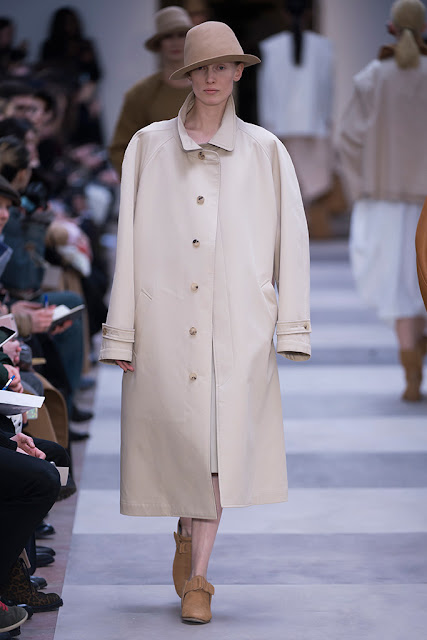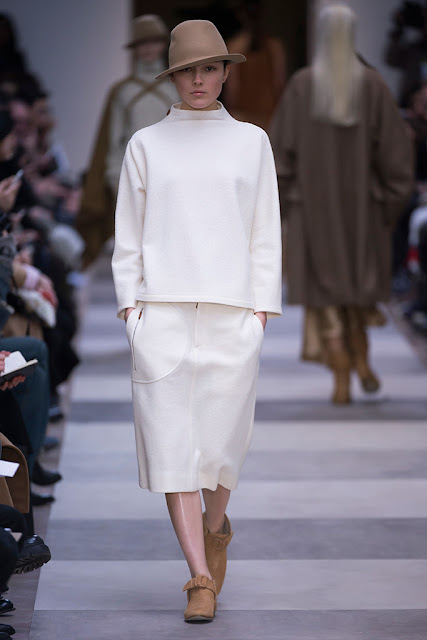Legendary Czechoslovak fashion brand named Nehera is known to all of us. In 1923, Ján Nehera established this brand together with Jakub Sekanin and František Dokoupil. A few years later, he started to manage it alone with his family. This brand offered men's coats, women's coats, blouses, dress for different occasions, bathrobes or clothes for children. Mentioned company had several shops in Slovakia, which excelled in wide range of services and very nice atmosphere.
Legendárna československá značka Nehera je známa každému z nás. Založil ju v roku 1923 Ján Nehera spoločne s Jakubom Sekaninom a Františkom Dokoupilom. O niekoľko rokov neskôr ju Ján Nehera začal viesť sám so svojou rodinou. Táto značka ponúkala pánske kabáty, dámske kabáty, blúzky, šaty na rôzne príležitosti, župany alebo odevy pre deti. Na území Slovenska mala firma niekoľko predajní, ktoré vynikali širokým spektrom služieb a veľmi príjemným prostredím.
Let us move into year 2014, when this fashion brand found its rebirth. Mr. and Mrs. Zdút created its new prototype with name NEHERA and except for its rich history, they have mainly focused on its own identity, which is defined by two elements: silhouette and shapes. Today's modern woman is mysterious, naturally beautiful and herself. The essence of individuality is what a woman wearing NEHERA makes so attractive.
Prenesme sa v čase do roku 2014, kedy táto značka našla svoje znovuzrodenie. Manželia Zdútovci vytvorili jej nový prototyp s názvom NEHERA a okrem odkazu na minulosť sa hlavne zamerali na vlastnú identitu, ktorú definujú dva prvky: silueta a tvary. Dnešná moderná žena je tajomná, prirodzene krásna a sama sebou. A práve podstata individuálnosti je to, čo ženu, ktorá nosí značku NEHERA, robí tak atraktívnou.
Samuel Drira is a creative director of the brand, who previously worked as a stylist and creative consultant for Hermés, The Row, Damir Doma or Christopher Lemaire. He currently lives in Paris and comes to Bratislava repeatedly to give the team his gained inspirations.
Kreatívnym riaditeľom značky je Samuel Drira, ktorý v minulosti pracoval ako stylista a kreatívny konzultant pre značky Hermés, The Row, Damir Doma či Christopher Lemaire. Žije v Paríži a do Bratislavy opätovne prichádza odovzdávať tímu svoje nadobudnuté inšpirácie.
Inspirations are the main point of the production process and they give a space to everyone, who has creative thinking. The final product, which is original and contains all the brand's identification marks, has been formed especially thanks to the inspirations and creative thinking.
NEHERA is an original brand because of being itself. It offers to the customers an evolving relationship between comfort, simplicity and design. A woman finds her own personality. She has got a power, which comes spontaneously and because of her silent individuality, she resists the urge to show off.
Inšpirácia slúži ako oporný bod pri procese výroby a dáva priestor každému, kto má kreatívne zmýšľanie. Vďaka inšpiráciám a zapojeniu vlastnej fantázie vznikne finálny produkt, ktorý je jedinečný a ktorý obsahuje všetky poznávacie znaky danej značky.
NEHERA je originálnou značkou v tom, že sa na nič nehrá. Svojmu nositeľovi ponúka rozvíjajúci sa vzťah medzi pohodlnosťou, jednoduchosťou a dizajnom. Žena nachádza svoju vlastnú osobnosť. Má v sebe silu, ktorá prichádza spontánne a svojou tichou individualitou potláča nutkanie predvádzať sa.
Next important step is the correct choice of materials. NEHERA uses natural materials, such as silk, virgin wool, merino, alpaca, cotton, linen and is also opened to mix them; for example cotton + nylon, wool + nylon or cotton + silk.
Very interesting materials are alcantara (a patented material imitating brushed leather), pleat, cupro, leather and natural shearling. Pure silk is rare and is used for production of shirts and dress. Natural materials give timelessness and complete the minimalistic style and innovative cuts of models.
Ďalším významným krokom je správny výber látok. NEHERA stavia na prírodné materiály, ako sú napr. hodváb, panenská vlna, merino, alpaca, bavlna, ľan a nebráni sa ani vytváraním zmesí ako bavlna+ nylon, vlna+ nylon alebo bavlna + hodváb.
Zaujímavými používanými materiálmi sú alcantara (patentovaný materiál imitujúci brúsenú kožu), plisé, cupro, koža a prírodný shearling. Vzácny je čistý hodváb z Talianska, ktorý sa používa na výrobu košieľ a šiat. Prírodné materiály dodávajú nadčasovosť a dopĺňajú minimalistický štýl a inovatívne strihy modelov.
After the correct choice of materials, here comes the ordering. NEHERA team has to exactly know, how many metres of what material are needed for sewing the specific models of the collection. The sourcing department is responsible for communication with suppliers from Italy, France, Austria, but also from Japan and Great Britain. They take care of the collection of buttons, laces and needles, which are also needed for production. Supplied materials are preserved in a central warehouse in Bratislava. This is the place, where they measure and take care of the materials - they store them into special plastic foils and their condition is checked regularly.
Po výbere správnych látok prichádza na rad objednávanie. Treba presne vedieť, koľko metrov látky je potrebných na šitie konkrétnych modelov kolekcie. Oddelenie s názvom "sourcing" má na starosti komunikáciu s dodávateľmi z Talianska, Francúzska, Rakúska ale aj Japonska a Veľkej Británie. Toto oddelenie sa stará aj o sadu gombíkov, šnúrok a nití, ktoré sú potrebné na výrobný proces.
Dodané látky sú uschované v centrálnom sklade v Bratislave. Na tomto mieste ich premeriavajú a príkladne sa o ne starajú - ukladajú ich do špeciálnych obalov a ich stav pravidelne kontrolujú.
Now we can continue with a processing of supplied materials in factories, which are based in Slovakia and Czech Republic. Each material is cut and send to the particular factory. Even though there are more pieces sewn from every model, we can still speak about the handwork. Cut testing on a paper model is very important. Firstly, a proposal of every model must be prepared in the form of paper cuts, which pass the internal testing. Those are actually templates for cutting materials for specific type of models.
Sometimes the first prototype of model can be created from another material than in its final form. This prototype is actually a piece of model, where we may notice, how does the material behave. This way they can find out the real features of the future model and they can also test, how will the future model look like in real; how it will fit to a woman. We can name the whole process as a preparation of role models for showrooms and factories.
Ďalším krokom je spracovanie dodaných látok vo fabrikách, ktoré sídlia na Slovensku a v Českej republike. Jednotlivé látky sa nastrihajú a pošlú do konkrétnej fabriky. Hoci sa šije viac kusov z každého modelu, stále sa jedná o ručnú prácu. Veľmi dôležité je testovanie strihu na papierovom modeli. Návrh každého modelu sa musí najprv pripraviť v podobe papierových strihov, ktoré prejdú interným skúšaním. Ide o podklady na strihanie látok pre daný typ modelu.
Niekedy sa prvý prototyp modelu môže vytvoriť z inej látky než jej finálna podoba. Tento prototyp je vlastne kus modelu, na ktorom môžme spozorovať, ako sa daná látka správa. Takýmto spôsobom sa zistia reálne vlastnosti budúceho modelu a zároveň sa otestuje, ako bude konkrétny model vyzerať v skutočnosti, ako sadne reálnej modelke. Ide o prípravu vzorových modelov pre showroomy a fabriky.
A heart of the whole company is a pattern team of NEHERA, which consist of ten people, headed by director Bibiana Zdút and creative director Samuel Drira. Seamstresses work together with the mentioned team, who will sew the prototype of model in Bratislava from selected materials. This prototype is next used as a sample for sellers in Paris, Milan and Tokyo showrooms.
After the final fitting, the prototypes are sent to the factories, where all of these models are sewn in a bigger amount. The final step is packaging and expedition - it is packaged into the protective foil and prepared for expedition. Nowadays, NEHERA has got more than forty clients on four continents. In Japan, China and Korea this brand is the most favourite one; but you can find it in selected boutiques in London or New York, as well.
Srdcom celej spoločnosti je vzorovací tím NEHERA, ktorý tvorí 10 ľudí na čele s riaditeľkou Bibianou Zdútovou a kreatívnym riaditeľom Samuelom Drirom. S týmto tímom spolupracujú krajčírky, ktoré v centrále - v Bratislave ušijú prototyp modelu z vybranej látky. Tento prototyp ďalej slúži ako vzorka pre predajcov v showroome v Paríži, Miláne a Tokyu.
Po finálnom skúšaní na modelkách sa prototypy zasielajú do fabrík, kde sa šijú dané modely vo väčších množstvách. Záverečným krokom je balenie a expedícia modelu. Ide o zabalenie do ochrannej fólie a prípravu na expedíciu. NEHERA má v súčasnosti viac ako štyridsať odberateľov na štyroch kontinentoch. Najobľúbenejšou je táto značka v Japonsku, Číne a Kórei, no nájdete ju aj vo vybraných butikoch v Londýne, New Yorku a podobne.
Do not miss the newest issue of RUD (3/2016) magazine, where you can find my article about fashion brand NEHERA, specifically on page 18-19!
Neprehliadnite najnovšie číslo časopisu RUD (3/2016) a prečítajte si môj článok o módnej značke NEHERA na strane 18-19!
In the end, enjoy the fall/winter 2016 collection, where Samuel Drira used different shades of beige, red and mostly earthy tones. Speaking about materials, he used raw silk, jersey and velvet. Raw silk created an unique surface, because its yarn did not have the same thickness throughout the whole fiber. Velvet helped to bring a nonchalance and an youthful look into common wardrobes.
So called faded forms are a way to imagine shapes that are both defined and blurred. Lines are pure and soft, volumes are loose and the superfluous is edited away. Absence turns into strength. Less is more. The silhouette lengthens and shortens at once on split levels. Asymmetry, wrapping and layering follow function with dynamism.
Na záver si vychutnajte kolekciu jeseň/ zima 2016, v ktorej Samuel Drira použil rôzne odtiene béžovej, červenej a prevažne zemité tóny. Čo sa týka materiálov, jednalo sa o surový hodváb, jersey a zamat. Surový hodváb vytvoril unikátny povrch, pretože jeho priadza nemala rovnakú hrúbku po celom vlákne. Zamat pomohol priniesť nonšalantnosť a mladistvý dôraz do bežných šatníkov.
Tzv. "faded forms" sú spôsobom, ako predstaviť tvary, ktoré sú definované a rozmazané. Línie sú čisté a jemné, objemy sú uvoľnené a všetko prebytočné je odstránené. Všetko chýbajúce sa premení v silu a pevnosť. Menej je viac. Silueta sa predlžuje a skracuje naraz, na rozdielnych úrovniach. Asymetria a vrstvenie v sebe ukrývajú funkciu dynamiky.
photos: archive by NEHERA






















































































No comments